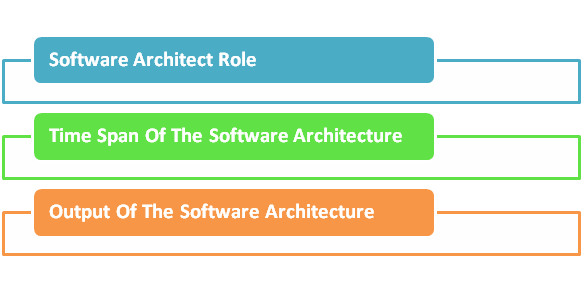Transformation to A More Flexible Software Architecture with Agile
The software architecture is the backbone of a system, in which the components of the system have a relationship with each other, as well as the environment and the principles guiding its design and evolution. The traditional, rigid waterfall architecture puts a curb on the phases of the project development but the agile software architecture is flexible and allows changes to be incorporated even during the latter phases of the project development. This Agile software architecture helps in the expansion of the system to take place in a sustainable, easy and gradual way along with the complicated project development.
Due to the growing importance of agile in the IT industry, companies are hiring agile developers with good salary. You can land a high-flying job as an Agile Developer with an Agile Developer training program.
Comparing the Traditional Software Architecture to the Agile Software Architecture
The rigid traditional Waterfall architecture can be compared to that of the agile software architecture on the basis of three areas, such as:

#1. The Particulars of the Software Architect Role:
Traditional Software Architect
In the traditional software architecture, there is only one type of role played by the software architect. He is responsible for analyzing the requirements and taking the technical decisions about the development of a project. In the small organizations, there is only one software architect, whereas in the larger organizations, there is a team of software architects.
Responsibilities of the Traditional Software Architect:
- Focus on the Big Picture: A software architect should be able to perceive how the system would look in future. He should also consider the other systems and the communications between them.
- Compliance-oriented: the software architect has to consider the compliance issues like legislative norms, standards, licenses, or others, and ensure the system in future should meet these vital aspects.
- Produces Blueprints: In this architecture, an important aspect is the collection of diagrams and documents, describing architecture from the different perspectives. The development team utilizes these deliverables to begin building the system.
- Not Much Hands-On Experience: The responsibility of the software architect is to furnish the final documents for the development team and he acts as a mentor for the developers to create the designed system.
Agile Software Architect:
In this type of architecture, three roles are described by the Scrum methodology of Agile.
Responsibilities of the Three Roles:
- Product Owner: He is responsible for offering information about the particular business domain.
- Scrum Master: He is responsible for helping in the collaboration and communication in the team.
- Development Team: He is responsible for the implementation of the user stories and thereby producing the working soft wares.
#2. The Time Period of the Software Architecture:
The traditional Waterfall model has well-defined phases. Whereas in the agile world, there is no particular starting point the employees agree to start on. One approach here is the introduction of sprint #0. This is a special sprint where the environment of development is configured, along with taking fundamental decisions (for instance, database, programming language, platform etc.) Even after the regular sprints are ready to start and the software architecture is not ready, still, there is no need to worry as the agile software architecture is a constantly ongoing process.
#3. The Output of the software architecture:
How to Organize the Documentation
The waterfall architecture requires the writing of extensive documentation, because it is employed to transfer the information between the phases, including the people involved in each phase .This is a laborious, time-consuming process, which leads to a lot of misunderstandings, due to the ill-formed features. Moreover, keeping the documentation up-to-date is difficult, as the development goes fast and does not reflect the documentation anymore. In the Agile architecture, only the important aspects of the system are described in the beginning and information is then added continuously.
What to Document
There is no need to document, multiple times the same aspect in the multiple formats in the agile architecture, as is done in traditional architecture, which requires the collection of multiple diagrams and documents describing the architecture from the various perspectives. In the agile architecture, there are tools which help in the development of diagrams from the code, which are convenient, instead of creating separate diagrams.
Hence, do the Agile and software development certification program to get a job with high remuneration in the IT industry.
Find a course provider to learn Agile
Java training | J2EE training | J2EE Jboss training | Apache JMeter trainingTake the next step towards your professional goals in Agile
Don't hesitate to talk with our course advisor right now
Receive a call
Contact NowMake a call
+1-732-338-7323Enroll for the next batch
Agile Certification Training
- Dec 10 2025
- Online
Agile Certification Training
- Dec 11 2025
- Online
Agile Certification Training
- Dec 12 2025
- Online
Related blogs on Agile to learn more

What is Zero Sprint in Agile? Everything You Should Know
In evolving technology, software development has seen drastic changes in the IT industry. As the demand for software development increases, utilization of various methodologies like Agile has become the global norm. So, the ever-growing demand for cu

Agile – The Latest Craze in the IT Industry
The Agile methodology promotes consistent repetition of the development and testing of the product throughout the life cycle of the software development of the project. The testing and development activities are concurrent. The solutions emerge throu

How To Take Your Career to New Heights As An Agile Developer
Agile Software Development is a term used for a group of practices and methods, based on the principles and values, expressed in Agile Manifesto. The solutions emerge through the collaboration between the cross-functional and self-organizing teams us
Latest blogs on technology to explore

From Student to AI Pro: What Does Prompt Engineering Entail and How Do You Start?
Explore the growing field of prompt engineering, a vital skill for AI enthusiasts. Learn how to craft optimized prompts for tools like ChatGPT and Gemini, and discover the career opportunities and skills needed to succeed in this fast-evolving indust

How Security Classification Guides Strengthen Data Protection in Modern Cybersecurity
A Security Classification Guide (SCG) defines data protection standards, ensuring sensitive information is handled securely across all levels. By outlining confidentiality, access controls, and declassification procedures, SCGs strengthen cybersecuri

Artificial Intelligence – A Growing Field of Study for Modern Learners
Artificial Intelligence is becoming a top study choice due to high job demand and future scope. This blog explains key subjects, career opportunities, and a simple AI study roadmap to help beginners start learning and build a strong career in the AI

Java in 2026: Why This ‘Old’ Language Is Still Your Golden Ticket to a Tech Career (And Where to Learn It!
Think Java is old news? Think again! 90% of Fortune 500 companies (yes, including Google, Amazon, and Netflix) run on Java (Oracle, 2025). From Android apps to banking systems, Java is the backbone of tech—and Sulekha IT Services is your fast track t

From Student to AI Pro: What Does Prompt Engineering Entail and How Do You Start?
Learn what prompt engineering is, why it matters, and how students and professionals can start mastering AI tools like ChatGPT, Gemini, and Copilot.

Cyber Security in 2025: The Golden Ticket to a Future-Proof Career
Cyber security jobs are growing 35% faster than any other tech field (U.S. Bureau of Labor Statistics, 2024)—and the average salary is $100,000+ per year! In a world where data breaches cost businesses $4.45 million on average (IBM, 2024), cyber secu

SAP SD in 2025: Your Ticket to a High-Flying IT Career
In the fast-paced world of IT and enterprise software, SAP SD (Sales and Distribution) is the secret sauce that keeps businesses running smoothly. Whether it’s managing customer orders, pricing, shipping, or billing, SAP SD is the backbone of sales o

SAP FICO in 2025: Salary, Jobs & How to Get Certified
AP FICO professionals earn $90,000–$130,000/year in the USA and Canada—and demand is skyrocketing! If you’re eyeing a future-proof IT career, SAP FICO (Financial Accounting & Controlling) is your golden ticket. But where do you start? Sulekha IT Serv

Train Like an AI Engineer: The Smartest Career Move You’ll Make This Year!
Why AI Engineering Is the Hottest Skillset Right Now From self-driving cars to chatbots that sound eerily human, Artificial Intelligence is no longer science fiction — it’s the backbone of modern tech. And guess what? Companies across the USA and Can

Confidence Intervals & Hypothesis Tests: The Data Science Path to Generalization
Learn how confidence intervals and hypothesis tests turn sample data into reliable population insights in data science. Understand CLT, p-values, and significance to generalize results, quantify uncertainty, and make evidence-based decisions.